Did you know that approximately 1,800 people are killed on our roads every year, as well as many thousands more being seriously injured leading untold misery for many families? Driving safety is a major issue, and while most of us are aware of safety features like airbags, understand why it is so vitally important to wear seatbelts in both the front and back, and why speed limits are imposed for a reason, surprisingly few drivers tend to think about their tyres, instead taking them for granted when it comes to road safety.
Which is very disappointing and worrying. Think about it; you can have all the modern gismos and safety features you like in your car, but at the end of the day it’s your tyres that are the only contact your vehicle has with the road. It’s a very small contact patch – not much larger than a modern smartphone – that determines the grip you have with the road, and if this fails – because for instance if the tyres are too worn down, under or overinflated, damaged, or the wrong size for your car – then none of the other driver safety technology will make a difference.
At Asda Tyres we, as well as other leading tyre professionals – such as Continental Tyres – are determined to change UK drivers attitudes to tyre safety. Improving motorists’ understanding of tyre safety is at the heart of Continental’s “Vision Zero” initiative, the aim of which is to ultimately achieve “zero fatalities, zero injuries and zero accidents“.
In this short article, we’re going to look at one often over-looked tyre safety topics – tyre sizes – and why it’s never a good idea to fit the wrong size to your vehicle.
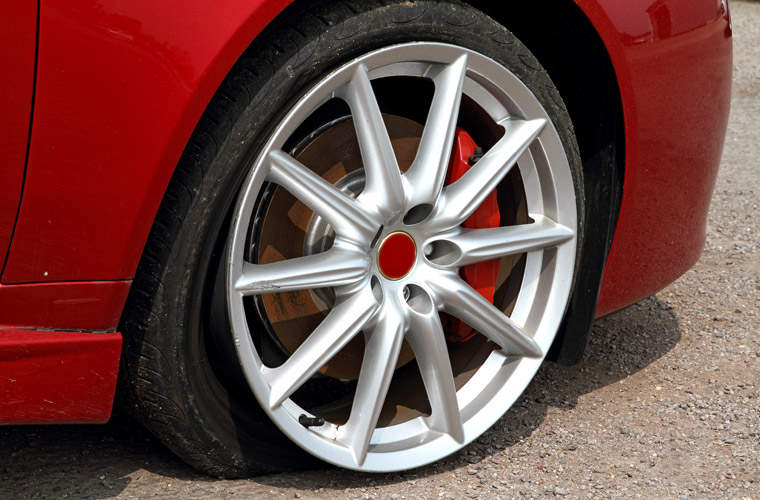
Mixing tyres is a mistake
Imagine this typical scenario; you have recently purchased a set of brand new premium tyres for your car – and don’t they look and feel great – but then just your luck one gets damaged because of some debris left by local builders. As a result, one of these new tyres needs immediately replacing. You’re offered a cheaper tyre that looks similar enough to the other three that are fitted, although not the same. It’s a slightly different size, but hey, it’s going to save you some money, right, so what’s the problem?
Plenty. Read on.
Pitfalls of fitting mismatched car tyres
Continental are one of the many automotive and tyre experts that firmly recommend fitting four of the same tyres to your vehicle. By “same” they mean the same size (the right size for your car), same tread pattern, and same age – exactly. Why? Well, contrary to some beliefs, it’s not because they want to try and sell you more tyres. No, it’s much more important than that. The truth is it’s because research has irrefutably proven that four identical tyres is much safer for motorists. And since you don’t simply drive on the UK’s roads by yourself, it really matters for everyone’s safety.
If you ignore this advice, consider these consequences:
Mismatched tyres can throw off your speedometer, resulting in false readings that leave you unaware of how fast you’re actually driving. That means an increased chance of a speeding fine, or underestimating your stopping distance.
Using mismatched tyres not only adversely affects steering, it also impacts on accelerating and the general handling of your vehicle. As a result you’re left with less grip and control, because steering feels sloppy. If you have to react suddenly to a driving incident, your chances of avoiding an accident are greatly reduced.
Mismatched tyres can typically result in it taking longer for your vehicle getting up to speed. This is especially dangerous if you urgently require a sudden burst of speed to help avoid danger, and – arguably more importantly – it will also take you longer to come to a safe stop. Longer stopping distances increase the chance of an accident.
If one of your tyres is wider than all the others you’ll typically experience serious instability with your vehicle, especially in wet or icy conditions. Not having optimum control when driving in these types of conditions dramatically increases your chances of a road accident.
Ultimately, if you use mismatched tyres, you’ll seriously put your vehicle at risk of damaged wheel bearings. There’s even an increased chance of destroying the clutch. This will not only risk your driver safety – and that of your fellow motorists – it will also hurt your bank balance. Nobody wants to have to pay for parts and repairs, right?
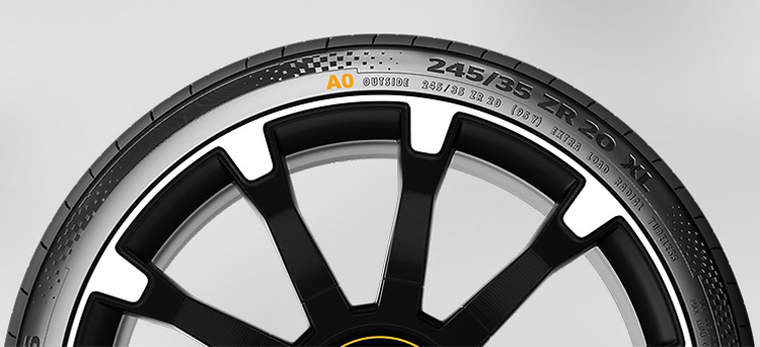
Aren’t there some cars with different front and rear tyres?
While it’s true that some cars – more often than not rear-wheel-drive BMWs and Mercedes-Benz models – are deliberately fitted with wider tyres on the rear wheels, it’s important to remember that this doesn’t equate to a mismatch. Why? Because these vehicles – after exhaustive research, development and testing – use the same ‘Original Equipment’ (OE) tyres are on each axle. In collaboration with the tyre manufacturer, the car maker has made an intentional decision to boost the traction on the rear driving wheels, so as to enhance driving dynamics.
The point is, the cars in question – as well as the OE tyres selected – have been designed specifically for this purpose. It’s a very specialist combination of automotive technology. Continental are a leading provider of original equipment to car manufacturers, with one in three cars rolling off Europe’s automotive production lines are fitted with their OE.
So, is there anything I can change with my tyres?
Yes. So long as you correctly match the same type of tyre across the axles, you can safely fit tyres with a higher speed rating, such as when you want to use your car for fun at a racetrack. The same is true if you need to transport heavier loads, such as trailers or caravans. You can fit tyres with a much higher load profile. If you’re feeling tempted to make a change like this, it really is worth checking with your vehicle manufacturer, or with a tyre expert at Asda Tyres. In most cases, you’ll also need to make sure you notify your insurer.
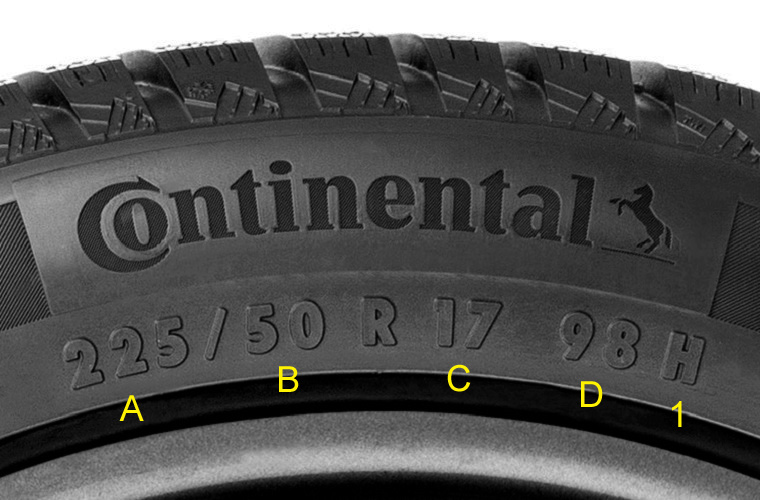
Check car tyre size to be sure
It’s always worth checking to see if your own car has the correct tyre size fitted, so familiarise yourself with these numbers. It’s the only way to be sure the right tyres are fitted, and you may even find a mismatch. Here’s an explanation of the numbers and letters on your tyre sidewall.
The first (A) is the tyre width in millimetres. The next (B) is the tyre profile, which is calculated on the basis of the width. If you see the letter “R” it just means your tyres are what’s known as a “radial” construction, which is good.
The next number shows the wheel rim diameter (C). This figure is shown in inches. The last number is what’s known as the load index (D). For instance, if you see “79” it means that the tyre can safely bear a total weight of 437 kg. It’s essential to get this right because if the load index is inadequate for your vehicle and what you’re using it for your insurance could well be invalidated in the event of an accident. Finally, there’s a letter (1) which represents the tyre’s speed rating, on a scale from A to Y. If you see, for example, a V, it means that the tyre can handle speeds up to 149 mph – not that you’d ever need to go that fast, right?
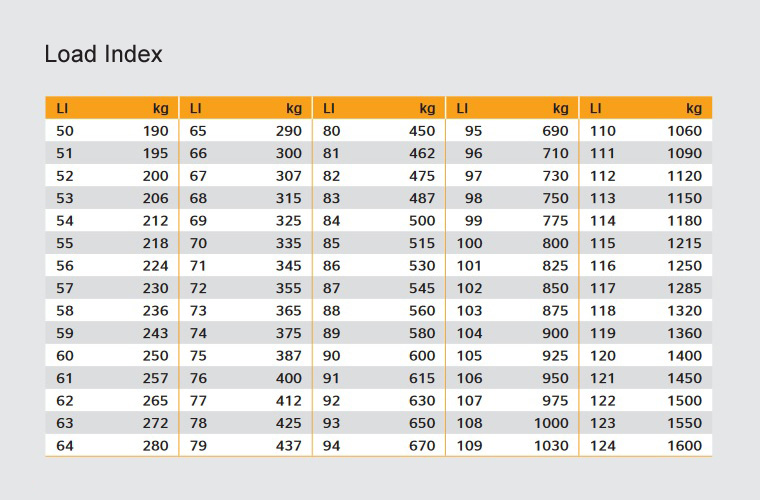
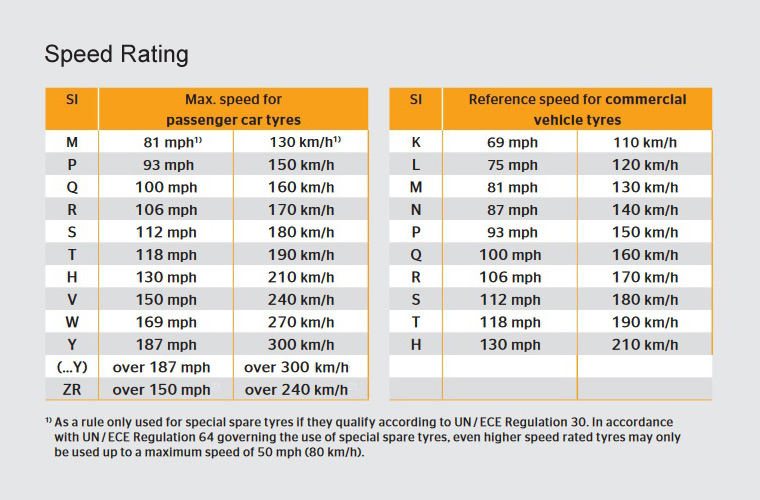
If you’re in any doubt about mixing tyre sizes, talk to Asda Tyres
Buying and fitting tyres can seem confusing. If you’re asking yourself “which is the right tyre size for my car?“ and are unsure, contact Asda Tyres‘ professional team. We’re highly experienced and can provide you with impartial, expert advice about the right tyres for you, general tyre safety, expert fitting services, and more. Click here to live chat to one of our experts, or find your nearest fitting station.
